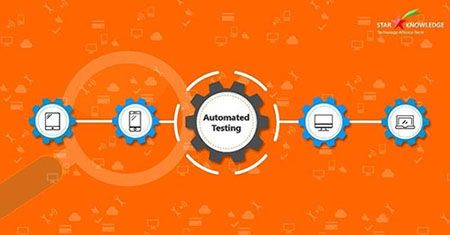
08 Aug Automation Testing Strategy for Software Applications
8 AUG 2018

Do you really care about the quality of your software application? Would you like to expand your software testing capacity to get speedier feedback? Then, automation testing is worth considering. To achieve the ultimate perfection, you should pay special consideration to such popular types of testing as automated testing.
You may know the value of software testing. However fast-paced software development environments can make time and cost requirements that make it hard to completely test an application prior to release.
As indicated by the market research, around 35% of the companies have officially adopted Automation testing tools and systems into their testing strategies. Furthermore, 29% of the companies have plans to execute it by this year.
The test automation framework is to create automated tests on the test cases generated for software applications that are being developed. It helps to identify the differences between actual results with anticipated results. Along these lines, automation testing has turned into a vital part of quality assurance.
What is Test Automation?
Software testing is essential and is an ever-growing part of the software development cycle. In the past, manual tests were executed to track the quality of the applications/software to expedite deployment. However, in recent years, software developers have shifted their strategy from manual software tests to test automation. Test automation has been widely adopted as an application testing strategy that has facilitated faster deployments, huge cost savings, improved test results, and more. Automation testing eliminates human actions through the use of advanced automation testing tools and software which reduce error-prone, time-consuming efforts.
Test Automation Strategy defines an automation framework for reusable automated scripts that guarantees more test coverage, higher test reliability, and a higher ROI.
Why Switch to Test Automation?
- Improved test accuracy
- Saves time
- Cost-effective
- Higher test coverage
- Increased test case efficiency
- Faster software deployment
- Shorter development cycle
- Reduced manual interruptions
Let’s get into automation testing benefits
Execute more software tests in a short period of time
Automated Tools run tests significantly faster than humans. It comes as a relief for validation during different segments of a project. This builds communication between designers, developers/coders, and project heads, and enables potential glitches to be fixed.
Define, communicate, and reduce your business expenses
This is mainly due to the sharp drop in the measure of time required to run tests. It gives a higher quality of work, thereby the need for settling glitches after discharge, and lessens venture costs.
Intelligence and smart analytics increase accuracy and reliability
In redundant and monotonous manual tests, it is conceivable that an analyzer can miss a bug or forget a specific step. But Automation testing shields you from this by offering profoundly exact outcomes with no issues for human mistakes.
Safeguard the integrity of automated testing environments and its process
Tests can run consequently whenever code changes are checked in and it notifies the developers or engineers if they fail. Through this, it saves developers time and increases their level of confidence.
Finding and fixing the bugs quickly
It’s hard to fix the bugs in the later phase of development. The help of a parallel testing technique in automation testing empowers the developing people to run tests on different platforms parallelly to fix the bugs at the prior phase of development.
More test coverage
Automation testing tools cover a greater number of test cases along with lengthy test cases unattended giving a larger number of test case coverage when compared to manual testing by ensuring better software quality management.
Digitalize your test with less manual effort
If any company has executed Automation testing for software testing, at that point it can accelerate the procedure and diminish the manual exertion multi-fold. An even smaller number of human resources will be required for an undertaking and they can be used for various ventures.
Most focusing areas in automation testing are,- Efficiency and performance
- User interface
- Accessibility
- Penetration and Security
- Computability and regression
- Functionality and Portability
- Regression testing
- Unit testing
- Load and performance testing
- Functional testing
- GUI functional testing
- Smoke testing
- Acceptance testing
- Mobile testing
Our Related Posts
Tips and Tricks to Shape your Application Successful
Do you know what really matters for building a successful application in today’s competitive marketing field? Today’s competitive generation….
Nurture Customer Relationship
By having a total perspective of the customer journey and picking up data at each touch point, organizations in the manufacturing industry….
Avoid SharePoint Deployment Mistakes
Do you know why organization faces a failed SharePoint deployment? Here are a few reasons for it...









No Comments